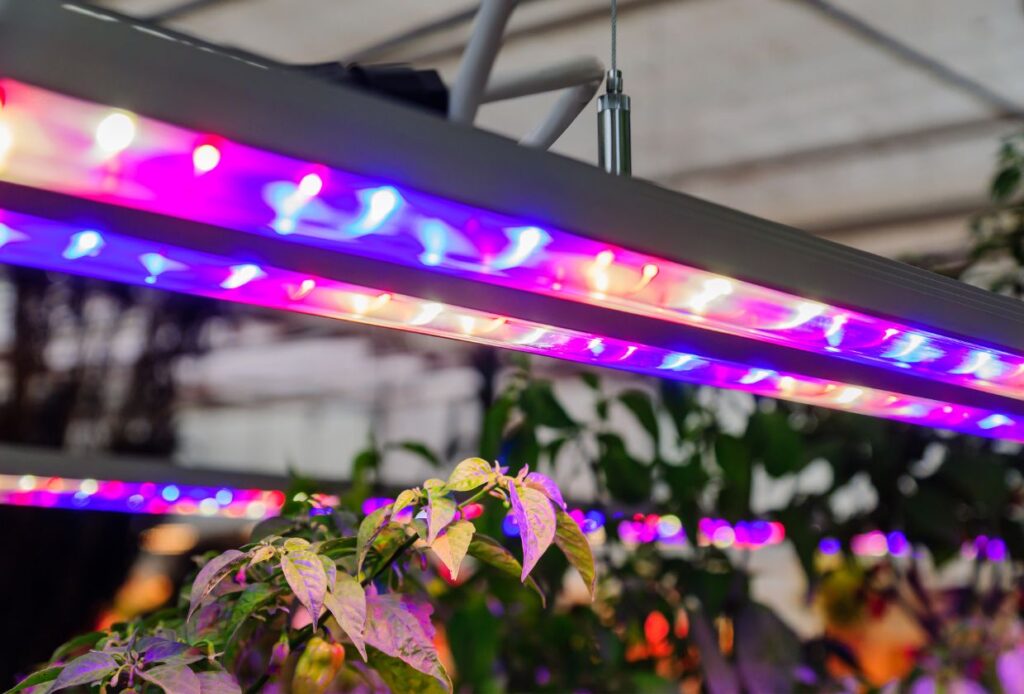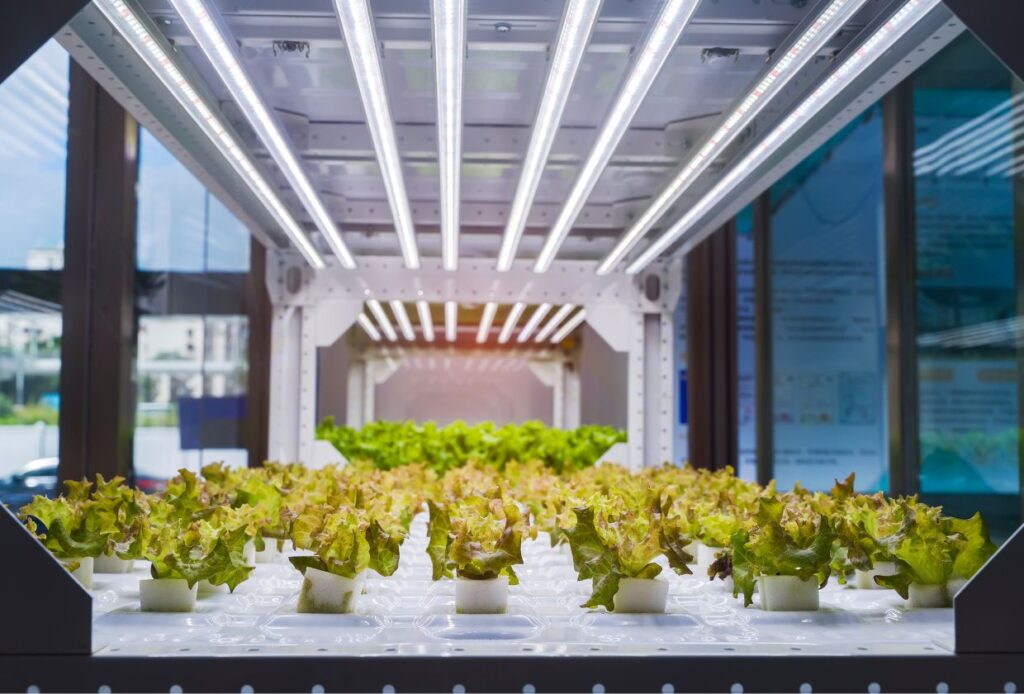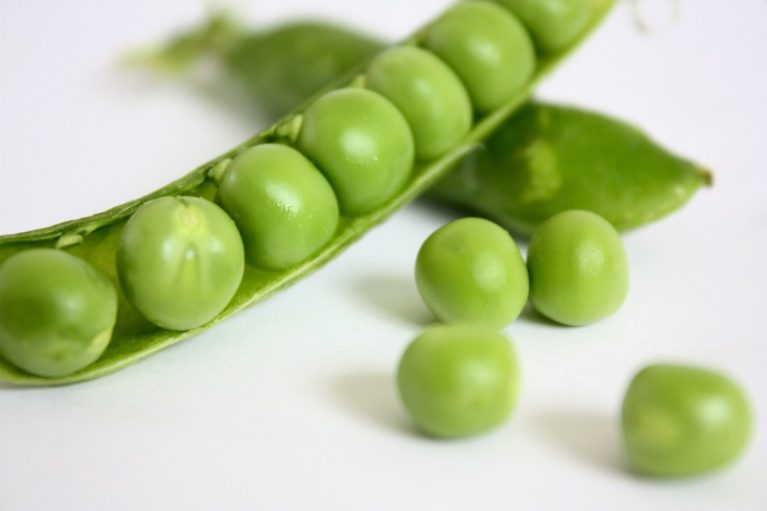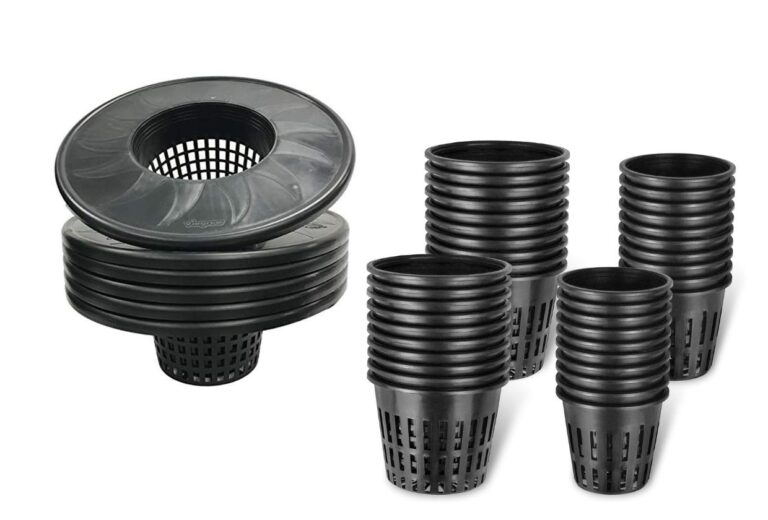Are LED Lights Good For Hydroponics?
I get commissions for purchases made through links in this post. View our Affiliate Disclaimer.
Are LED lights good for hydroponics? This is a question that many hydroponic enthusiasts and gardeners ponder. In recent years, LED lights have gained popularity in the world of indoor gardening due to their numerous benefits.
LED lights offer a range of benefits that make them a viable option for hydroponic gardening. LED lights can be pricey but are energy-efficient and generate less heat. They emit specific wavelengths of light optimized for plant growth resulting in healthier and more productive crops.
Additional Essential Homestead Resources
✅ Medicinal Garden Kit - Grow medicine in your garden! A collection of seeds to get you started.
✅ Homesteaders Handbook - A printed book that covers all the basics for homesteaders.
✅ The Self-Sufficient Backyard - This book is an excellent resource for self-sufficiency on 1/4 acre!
✅ Into The Wild Survival Pack - Learn foundational survival skills every homesteader should know!
In this article, we discuss the advantages and drawbacks of using LED lights in hydroponics and provide some considerations and tips for choosing the right LED lights for your hydroponic setup.
Benefits Of LED Grow Lights In Hydroponics
LED lights in hydroponics offer you a multitude of benefits, making them an excellent choice for your indoor hydroponic gardening needs.
Energy-Efficient LED Lights
One of the key advantages of LED lights is their energy efficiency. Unlike traditional lighting systems, LED lights convert a higher percentage of energy into light, resulting in less energy wasted as heat.
This reduces your electricity bills and helps to create a more sustainable and environmentally friendly growing environment.
LED Grow Lights Are Cost-Effective
In addition to being energy efficient, LED lights in hydroponics are also cost-effective. Although the initial cost of LED lights may be higher compared to other lighting options, they have a longer lifespan, which means you won’t have to replace them as frequently.
LED lights last up to 50,000 hours or more, saving you money in the long run.
Less Maintenance Required For LED Grow Lights
LED lights require less maintenance and produce less heat, reducing the risk of plant damage and the need for additional cooling systems.
Overall, the combination of energy efficiency and cost-effectiveness makes LED lights a smart investment for hydroponic gardeners looking to maximize their yields while minimizing expenses.
Drawbacks Of LED Lights In Hydroponics
You may encounter a few drawbacks when using these modern lighting options for your hydroponic setup.
Limited Coverage Area Of LED Lights
One major disadvantage of LED lights in hydroponics is their limited coverage area. LED lights emit light in a specific direction, resulting in a narrow beam angle. This means that they may not be able to provide sufficient light coverage for larger hydroponic systems.
To achieve uniform lighting, you may need to invest in multiple LED fixtures, which can increase the overall cost of your setup.
Reduced Heat Output With LED Grow Lights
Another limitation of LED lights in hydroponics is their reduced heat output. While this may seem like a positive aspect at first, it can actually be a drawback in certain situations. Hydroponic systems require a specific temperature range for optimal plant growth, and traditional lighting options such as high-pressure sodium (HPS) lights can help in achieving this temperature.
LED lights, on the other hand, produce significantly less heat, which may require additional heating methods to maintain the desired temperature. This can add complexity and cost to your hydroponic system.
Considerations For Using LED Lights In Hydroponics
When considering the use of LED grow lights in hydroponics, there are several key points to keep in mind.
- It’s important to consider the light spectrum and the exact needs of the plants being grown. Different wavelengths of light can have varying effects on plant growth and development.
- Light intensity and coverage area should be taken into account. These factors alone can impact the overall health and productivity of the plants.
- Adjustable lighting systems and timers can be beneficial. They provide the optimal amount and duration of light for the plants, allowing for greater control and customization of the growing environment.
Light Spectrum And Plant Growth Requirements

To maximize plant growth in hydroponics, we need to understand the importance of providing the right light spectrum for our plants. Light spectrum plays a crucial role in photosynthesis, the process by which plants convert light energy into chemical energy to fuel their growth.
Here are three key factors to consider when it comes to light spectrum and plant growth requirements:
- Different wavelengths. Plants require different wavelengths of light for various stages of growth. Blue light, for example, is essential for promoting vegetative growth, while red light is crucial for flowering and fruiting. By combining blue and red light, we can ensure that our plants receive the full spectrum they need for optimal growth.
- Intensity and duration. The intensity and duration of light exposure also affect plant growth. High-intensity light is necessary for plants to carry out photosynthesis efficiently, but too much can cause damage. It’s important to strike a balance and provide the right amount of light for each growth stage. Additionally, the duration of light exposure should mimic natural daylight cycles to ensure proper plant development.
- Supplementing with other wavelengths. In addition to blue and red light, plants can benefit from other wavelengths as well. Green light, for example, is not as readily absorbed by plants but can penetrate deeper into the canopy, stimulating growth in lower leaves. Ultraviolet (UV) and far-red light also have specific effects on plant growth and can be used to manipulate certain aspects, such as plant height or flowering time.
Understanding the importance of the light spectrum and its impact on plant growth requirements is vital for successful hydroponics. By providing the right combination of wavelengths, intensity, and duration, we can create an ideal growing environment that promotes healthy and vigorous plant growth.
Light Intensity And Coverage Area
In order to optimize plant growth in hydroponics, it is crucial to ensure that the light intensity and coverage area are carefully considered and adjusted accordingly.
Light intensity refers to the amount of light energy that reaches the plants, while coverage area refers to the space that the light can effectively reach.
These factors play a significant role in determining the success of a hydroponic system, as they directly impact the photosynthesis process and overall plant health.
Light distance is an essential consideration when it comes to light intensity and coverage area. The distance between the light source and the plants should be carefully adjusted to provide the optimal amount of light energy.
If the LED grow light is too close to the plants, it can result in excessive light intensity, which may cause heat stress or leaf burn. If the light is too far away, it may lead to insufficient light intensity, resulting in weak and leggy plants.
It is important to find the right balance and adjust the light distance accordingly.
Another factor to consider is light penetration. Different plants have varying levels of light requirements, and the ability of light to penetrate through the plant canopy is crucial for uniform growth.
Insufficient light penetration can lead to shaded areas within the canopy, causing uneven growth and potentially inhibiting the overall productivity of the hydroponic system.
By adjusting the light distance and positioning the lights properly, the light can penetrate through the plant canopy more effectively, ensuring that all parts of the plants receive an adequate amount of light for optimal growth.
To emphasize the importance of light distance and light penetration, consider the following table:
| Light Distance | Light Penetration |
| Close to plants | Deep penetration, but may cause heat stress |
| Far from plants | Shallow penetration, weak and leggy growth |
| Optimal distance | Uniform light distribution, optimal growth |
By understanding and optimizing the light intensity and coverage area in a hydroponic system, we can provide the ideal conditions for plants to thrive.
This attention to detail ensures that each plant receives the necessary amount of light energy for photosynthesis, resulting in healthy and productive growth.
Adjustable LED Grow Light Systems And Timers

Imagine being able to effortlessly adjust your lighting system and timers, creating a dynamic and visually stunning environment for your thriving hydroponic garden.
With adjustable lighting techniques, you have the power to mimic natural sunlight conditions, providing the optimal lighting duration for your plants’ growth and development.
Here are three ways adjustable lighting systems and timers can enhance your hydroponics experience:
Customizable Light Intensity For Hydroponics Systems
By using adjustable lighting systems, you can easily modify the light intensity to suit each stage of your plant’s growth.
During the vegetative phase, you can provide a higher light intensity to promote leafy growth and strong root development. As your plants transition into the flowering stage, you can lower the light intensity to simulate the gradual decrease in sunlight intensity that occurs in nature.
This level of customization allows you to provide your plants with the perfect amount of light they need at each stage, leading to healthier and more productive growth.
Dynamic Light Spectrum For Hydroponic Plants
Adjustable lighting systems also offer the advantage of changing the light spectrum according to your plants’ needs. Different wavelengths of light have varying effects on plant growth and development.
By adjusting the light spectrum, you can optimize photosynthesis, enhance flowering, and even influence the production of secondary metabolites in certain plant species. This flexibility enables you to create a tailored lighting environment that maximizes the potential of your hydroponic garden.
Precise Timing For Growing Hydroponic Plants
Timers are an essential component of any hydroponic setup, and with adjustable lighting systems, you can easily program precise lighting schedules.
Plants have specific photoperiod requirements, meaning they need a certain duration of light and darkness to thrive. With adjustable timers, you can set the perfect lighting duration for your plants, ensuring they receive the ideal amount of light each day.
This level of control not only simplifies your gardening routine but also helps create a consistent and stable environment for your plants, promoting healthy growth and minimizing stress.
Adjustable lighting techniques and timers are invaluable tools for hydroponic gardeners. They allow you to customize light intensity, modify the light spectrum, and program precise timing, creating an optimal environment for your plant’s growth and development.
By harnessing the power of adjustable lighting systems, you can provide your hydroponic garden with the perfect conditions it needs to flourish.
Top Tips for Choosing LED Lights For Hydroponics
LED lights can be a game-changer for hydroponics, but how do you choose the perfect ones? When it comes to selecting LED lights for hydroponics, two important factors to consider are LED light efficiency and cost-effectiveness.
1. LED Grow Lights Are Known For Their High Efficiency
LED lights produce a lot of light while using minimal energy. This is crucial for hydroponics, as plants require specific light wavelengths for optimal growth.
LED lights can be customized to emit the exact spectrum of light needed for different stages of plant growth, such as seedling, vegetative, and flowering.
By using LED lights with high efficiency, you can provide the right amount of light without wasting energy, resulting in healthier and more productive plants.
2. LED Lights Are Cost-Effective
Another key consideration when choosing LED lights for hydroponics is cost-effectiveness. While LED grow lights may have a higher upfront cost compared to traditional lighting systems, they offer significant long-term savings.
LED grow lights have a longer lifespan than other types of lights, which means you won’t have to replace them as frequently. LED lights consume less energy, leading to lower electricity bills. This makes them a cost-effective choice in the long run.
LED lights produce less heat compared to other lighting options, reducing the need for additional cooling systems and further saving on energy costs. By investing in high-quality LED lights, you can ensure efficient and cost-effective lighting for your hydroponic system.
LED Lights For Hydroponics FAQs
Read on to find out the answer to your questions:
What Are The Different Types Of LED Lights Available For Hydroponics?
There are two main types of LED lights for hydroponics:
- full spectrum LED lights
- and red and blue LED lights
Full spectrum LEDs provide a wide range of wavelengths, while red and blue LEDs target specific wavelengths.
Pros include energy efficiency and longer lifespan, but cons include higher upfront costs and potential light intensity limitations.
Can LED Lights Be Used For All Stages Of Plant Growth In Hydroponics?
LED lights can be used for all stages of plant growth in hydroponics. Compared to fluorescent lights, LED lights provide a wider range of light spectrums that can be tailored to specific plant needs, resulting in better growth and higher yields.
How Long Do LED Lights Typically Last In Hydroponic Systems?
LED lights in hydroponics typically last for 50,000 to 100,000 hours, making them a cost-effective choice. Compared to traditional grow lights, LED lights are more efficient, produce less heat, and offer a longer lifespan.
Are LED Lights More Energy-Efficient Than Other Types Of Grow Lights?
LED lights are highly energy-efficient compared to other types of grow lights. They consume less electricity while providing the same or even better light output. This makes them a beneficial choice for hydroponics, reducing energy costs and promoting sustainable cultivation practices.
Are There Any Safety Precautions When Using LED Lights In Hydroponics?
Safety precautions must be taken when using LED lights in hydroponics to mitigate potential risks. This includes avoiding water contact, providing proper ventilation, and ensuring a secure electrical setup to prevent accidents and maintain a safe growing environment.
Conclusion
LED lights are a great option for hydroponics due to their energy efficiency, customizable spectrum, and ability to promote optimal plant growth. While there may be some initial costs and maintenance requirements, the long-term benefits of LED lights outweigh these drawbacks.
By carefully considering the specific needs of the plants and the grow space, hydroponic growers can select the most suitable LED lights to maximize their yield and overall success.
Get more posts like this
Subscribe to our mailing list and get interesting homesteading and green living info and updates to your email inbox.
Thank you for subscribing.
Something went wrong.








5 Comments